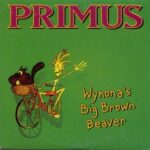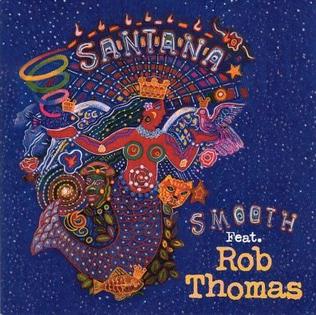 In 1995, Primus released one of the most bizarrely captivating tracks of the decade: “Wynona’s Big Brown Beaver.” It was a song that didn’t just defy conventional music norms—it laughed in their face, straddling the line between comedy, funk, and progressive rock. By that point, Primus had already carved out a reputation for their eccentric style, blending Les Claypool’s virtuosic slap bass, Danny Carey-esque drumming patterns, and Les’ idiosyncratic vocals into a chaotic yet oddly hypnotic brew. But with “Wynona’s Big Brown Beaver,” the band achieved something truly iconic: a track that was as catchy as it was absurd, a cultural oddity that still commands attention decades later.
In 1995, Primus released one of the most bizarrely captivating tracks of the decade: “Wynona’s Big Brown Beaver.” It was a song that didn’t just defy conventional music norms—it laughed in their face, straddling the line between comedy, funk, and progressive rock. By that point, Primus had already carved out a reputation for their eccentric style, blending Les Claypool’s virtuosic slap bass, Danny Carey-esque drumming patterns, and Les’ idiosyncratic vocals into a chaotic yet oddly hypnotic brew. But with “Wynona’s Big Brown Beaver,” the band achieved something truly iconic: a track that was as catchy as it was absurd, a cultural oddity that still commands attention decades later.
Primus: The Architects of Weirdness
Primus was never interested in blending in. From their earliest albums, the band had made it clear that conventional songwriting was not their forte—or their goal. Les Claypool, the bassist and lead vocalist, had a unique approach to music: slap bass techniques that could feel like percussive instruments themselves, vocal inflections that ranged from growls to falsetto, and lyrics that told surreal, often grotesque stories. Guitarist Larry LaLonde added layers of angular, almost jazzy guitar lines, while drummer Tim Alexander provided an intricate, unpredictable backbone to the compositions.
By 1995, Primus had already released Sailing the Seas of Cheese and Pork Soda, albums that established their cult following. But they hadn’t yet cracked mainstream consciousness in a major way. That changed with “Wynona’s Big Brown Beaver”, the lead single from their album Tales from the Punchbowl. Suddenly, the band’s peculiar vision reached MTV airwaves and radio playlists, bringing their brand of humor-laced virtuosity to a wider audience.
The Birth of a Beaver
“Wynona’s Big Brown Beaver” is a song that demands attention from the first slap of the bass. Les Claypool’s distinctive growl announces the titular character, Wynona, whose “big brown beaver” is, as the lyrics delicately imply, a source of fascination, humor, and slightly questionable innuendo. The song’s narrative is intentionally ridiculous, teetering between the surreal and the absurd. It’s less about a coherent story and more about painting a vivid, outrageous tableau—Primus’ specialty.
Les himself has joked about the origins of the song in interviews, explaining that it started as a playful, semi-nonsensical lyric exercise. The band wanted to create something that was musically tight but lyrically untethered, allowing them to explore the kind of bizarre humor that had become a trademark of Primus. The result is a song that sounds like a party in a swamp, where humor, funk, and eccentricity collide.
A Funk-Infused Madness
Musically, “Wynona’s Big Brown Beaver” is a tour de force of Primus’ signature style. The bass line drives the track, slap-heavy, syncopated, and impossibly funky, giving the song a kinetic energy that’s impossible to resist. Les Claypool turns the bass into a lead instrument, filling spaces where guitar solos or vocal hooks might traditionally sit. Larry LaLonde’s guitar work complements this perfectly, providing sharp, twisted riffs that slide in and out of time signatures, while Tim Alexander’s drumming adds rhythmic complexity, using unexpected fills to keep listeners on edge.
The song’s structure is deceptively simple. The verse and chorus cycle repeatedly, allowing the bass and drums to shine, but subtle shifts in rhythm, unexpected stops, and vocal inflections keep the listener engaged. Primus thrives on unpredictability, and “Wynona’s Big Brown Beaver” is a masterclass in balancing chaos with groove.
The chorus itself is infectious, with Claypool’s vocals punctuating the absurdity of the lyrics. It’s humorous, it’s ridiculous, and yet somehow it sticks in your head like a legitimate pop hook. That juxtaposition—the combination of virtuoso musicianship and absurd lyricism—is what makes the song uniquely Primus.
Lyrics That Skate the Edge
The lyrics of “Wynona’s Big Brown Beaver” are what make the song unforgettable. They are overtly playful, dripping with innuendo, and entirely unapologetic in their weirdness. Lines like:
“Wynona’s got herself a big brown beaver
Yeah, Wynona’s big, big, big, big beaver”
…are delivered with deadpan conviction, creating a surreal, comic atmosphere. Les’ vocal performance alternates between urgency and mock-seriousness, adding layers to the already bizarre narrative.
The humor in the song is both explicit and absurdist. While it clearly plays with sexual innuendo, it’s delivered in a cartoonish, exaggerated fashion that prevents it from feeling crude or offensive. Instead, it becomes an exercise in creative absurdity, a celebration of silliness and eccentricity in a musical landscape that was, at the time, dominated by grunge’s brooding seriousness and the emerging pop-punk sound.
It’s this combination of wit and musical talent that allowed the song to connect with both die-hard Primus fans and casual listeners curious about its oddball charm.
Visuals That Amplified the Madness
The music video for “Wynona’s Big Brown Beaver” deserves its own accolades. Directed with Primus’ signature humor and surreal aesthetic, it amplifies the song’s weirdness through visuals that range from the absurd to the cartoonish. The band members themselves appear in exaggerated, theatrical portrayals, acting out scenarios that mirror the song’s lyrics in increasingly surreal ways.
The video was a hit on MTV, cementing the song’s status as a 1995 cultural touchstone. Its blend of humor, funk, and theatricality resonated with audiences who were eager for something different from the prevailing grunge and alternative rock trends. It was the perfect visual complement to the song, enhancing its story without overshadowing the musicianship.
Primus’ Place in the 1990s
“Wynona’s Big Brown Beaver” arrived at a unique moment in 1995. Alternative rock was firmly entrenched in the mainstream, but the market was saturated with angst, rebellion, and serious-toned music. Primus’ approach—technical, funky, absurd, and irreverent—offered a refreshing alternative. It was music that demanded attention, invited laughter, and showcased virtuosity without taking itself too seriously.
The song’s success demonstrated that there was room for eccentricity in popular music, a proof point for future genre-bending and experimental artists. Primus showed that you could combine technical skill with humor and still achieve commercial success—a rare balance that few bands manage to strike.
Cultural Legacy
Over the years, “Wynona’s Big Brown Beaver” has become one of Primus’ signature songs, emblematic of their unique style and ethos. Its catchy bass line, absurd lyrics, and memorable chorus make it instantly recognizable, even to casual listeners who may not be familiar with the band’s full catalog.
The song has been celebrated in retrospective articles, ranked in 1990s best-of lists, and frequently cited as a key example of Primus’ influence on alternative rock and funk-metal. It’s a track that captures the band’s identity perfectly: technically skilled, humor-laden, and unafraid to embrace the bizarre.
Its impact also extended to live performances. “Wynona’s Big Brown Beaver” quickly became a crowd favorite, with audiences singing along to every ridiculous lyric. The song’s live renditions often feature extended jams, improvisational flourishes, and audience interaction, turning it into a theatrical highlight of Primus concerts.
Why It Still Matters
Decades later, “Wynona’s Big Brown Beaver” remains as vibrant and fun as it was in 1995. It is a reminder that music can be technically impressive, commercially viable, and utterly absurd all at once. It exemplifies the power of creativity in music, showing that taking risks, embracing humor, and leaning into eccentricity can produce something lasting.
In an era dominated by polished pop and formulaic rock, Primus carved out a niche that was unapologetically their own. “Wynona’s Big Brown Beaver” is more than a song—it’s a statement, a celebration of weirdness, and a testament to the enduring power of musical experimentation.
The Anatomy of a Beaver
It’s worth breaking down why the song sticks in the memory. The infectious bass riff hooks listeners immediately, while the angular guitar and dynamic drumming create tension and release. Les Claypool’s vocal delivery, full of theatrical inflection and playful growls, conveys humor and personality that no instrument could replicate. Finally, the lyrics, with their absurd imagery and cheeky innuendo, give the song an identity that is impossible to forget.
The song is a masterclass in balancing musicianship with entertainment. Every component—bass, drums, guitar, vocals, lyrics—works in tandem to produce a track that’s both accessible and complex, ridiculous and impressive.
Final Reflection
“Wynona’s Big Brown Beaver” is emblematic of what makes Primus great. It’s quirky, inventive, and irreverent, a perfect snapshot of mid-1990s alternative rock that refuses to conform. The song’s combination of funk-driven instrumentation, absurdist lyrics, and contagious energy ensures it remains timeless.
Primus didn’t just create a hit—they created a cultural touchstone that captured the spirit of experimentation, humor, and musical daring. It’s a song that continues to inspire musicians and delight listeners, a celebration of the strange and the wonderful in music.
Listening to it today, the track still has the power to surprise, entertain, and delight. Its absurdity, far from being a flaw, is its genius. Les Claypool and Primus proved in 1995 that music could be weird, catchy, and brilliant all at once—and “Wynona’s Big Brown Beaver” remains the ultimate proof.
It’s funky, funny, and unforgettable—a song about a beaver, sure, but more than that, a song about the fearless creativity of one of the most unique bands of the decade.


